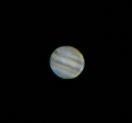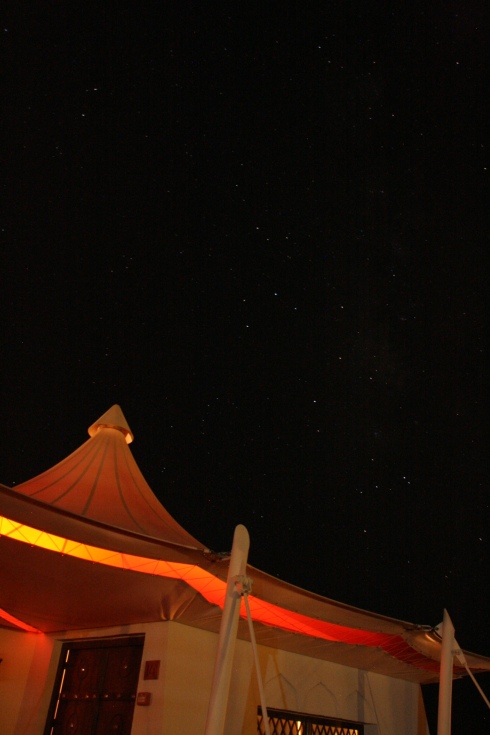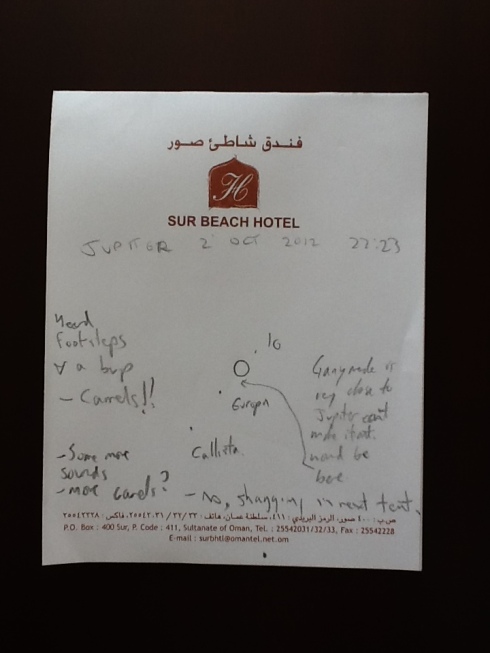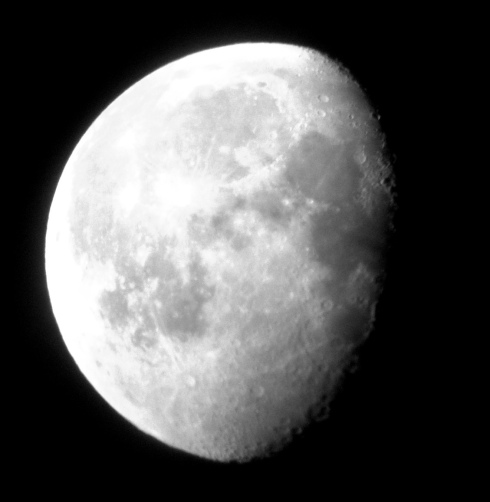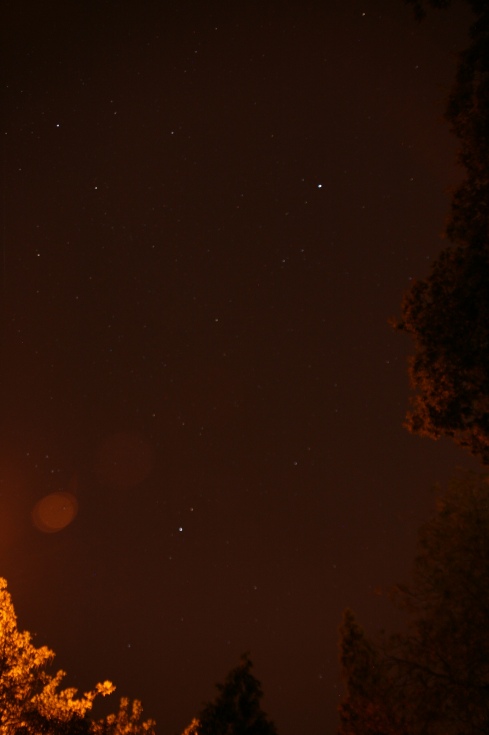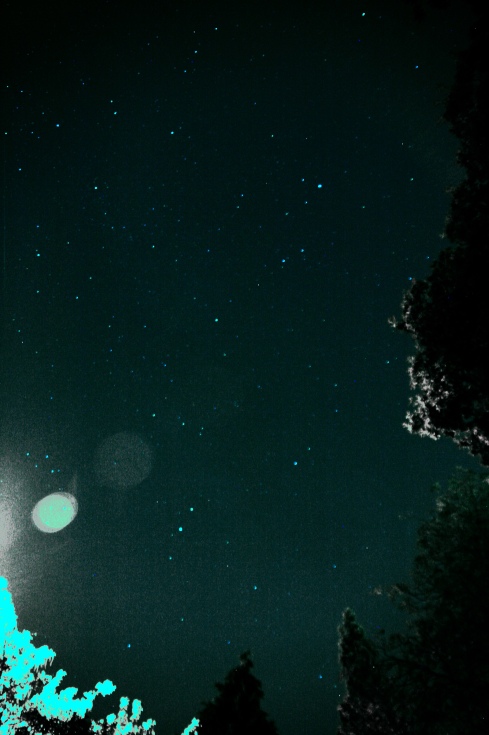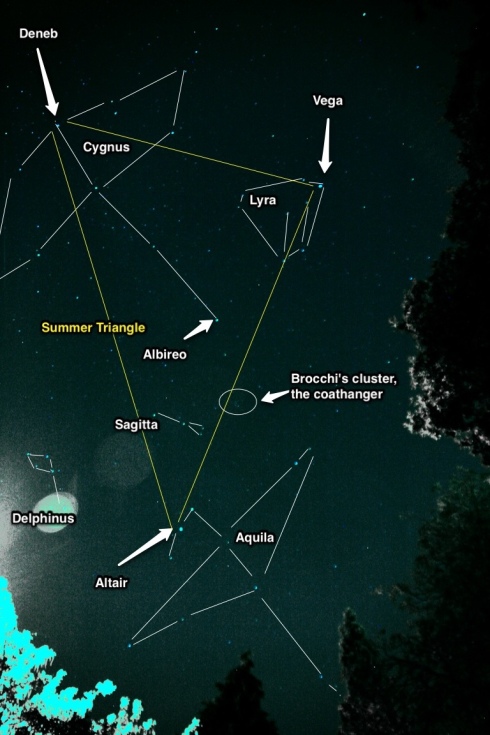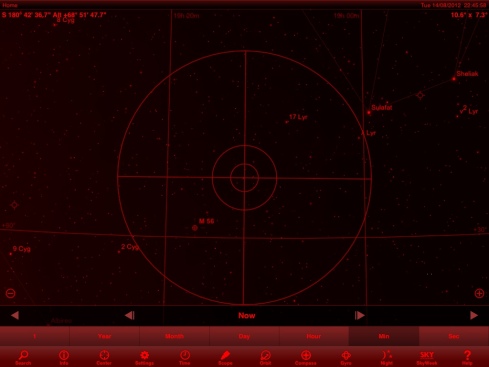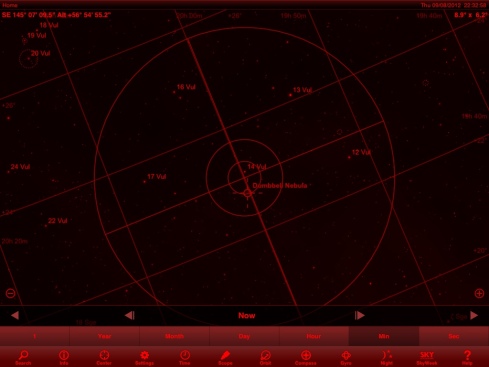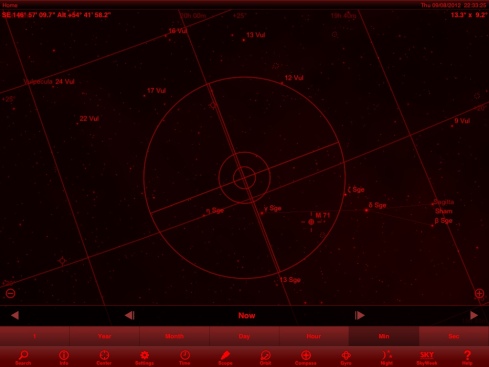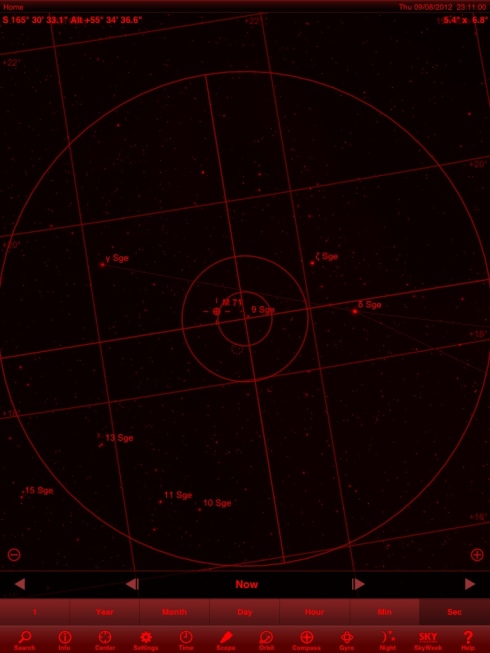Location : Home, next to the bench
Conditions: Clear. Had been raining earlier so damp.
Equipment: skywatcher 130 scope, AsdaCAM
Highlights: Jupiter, Auriga, M36-Pinwheel Cluster, M37, M38-Starfish Cluster
17:30 1st Quarter Moon, Jupiter
As I left work this evening the skies were reasonably clear with a quarter moon shining brightly to the South, after over a week of cloud. While driving home along the dark A38, I also spotted Jupiter up in the East. Was looking forwards to getting out when I got home.
21:00 Jupiter
In and out of the garden setting up while I was doing the tea. Got out to start observing just before 21:00. Spent until about 21:30 imaging Jupiter to the East before it went behind a fir tree. Used the AsdaCam. Used some of what I picked up from the Bromsgrove Astro session on webcam imaging on Monday. Found that I could shoot at 1280 rather than 640. Also ran it at the fasted frame rate I could in Sharpcam. Used the histogram to get the best exposure. Also picked up on the fact that Jupiter rotates quickly so kept my captures down to 45 seconds. I also captured some over exposed video so that I could combine the moons, 3 of which were visible in a line of to the the right side. It’s a shame that it went behind the tree when it did, as a Great Red Spot transit was due between 21:30 and 23:30. I’ll process the images in the next few days.
21:40 Auriga, Capella – Alpha Aurigae
The space to the left of the fir tree to the east was filled Auriga. Another new constellation that I can identify easily to help find my way around the sky. Capella is it’s brightest star.
22:10 Pinwheel Cluster – Messier 36 , Open Cluster in Auriga
I was intending to try for the Double Cluster next between Perseus and Cassiopeia but that part of the sky was right up at the zenith and I couldn’t get the scope there without it fouling on the tripod mount. So instead I used SkySafari+ to find out what was in the vicinity of Auriga. Delighted to find there were 3 Messier objects, all open clusters. So there’s my objective for the evening. I started with M36, the Pinwheel cluster. An easy starhop from Elnath-Beta Tauri via Chi Auriga. This was a rewarding target. It was a bit boring at first in the 25mm but stepping up to the 17mm Plossl eyepiece and spending time at the eyepiece brought out more stars in the cluster. It didn’t have a particularly recognisable or distinctive shape but I think that will come from more time spent on return visits. This is one of the targets in the Sky at Night Deep Sky Tour for November 2012. I also got the Turn Left at Orion book out to compare notes.
22:43 Messier 37 Open Cluster in Auriga
This was a tricky starhop. I tried from Elath first and got lost so tried again from Theta Auriga and found it on the second attempt. I was hopping using quite faint stars and it was pleasing to be doing so with confidence. My starhop skills with the RACI really have improved. M37 was just about visible in the RACI. Moving to the scope and looking through the 17mm Plossl I was struggling to make out any detail other than a fuzzy. There was a bit of thin cloud about but this was reasonably fast moving so not too much of a problem. The glare of the street light was not helping either. I had my baffle screen out but I couldn’t get it close enough to the scope without having to move everything and without it obscuring the sky. It was difficult to resolve individual stars but it was definitely there as I could make out the fuzziness. I was a bit surprised by this as SkySafari+ was claiming it to be quite a bright object. Changing to the 25mm in an attempt to improve the brightness of the image was actually worse and I pretty much lost it altogether. Checking in Turn Left at Orion helped and reassured me that I was looking at M37, 4,600 light years away as it described it as fuzzy and challenging. It also suggested that in a small to medium scope it wouldn’t resolve to individual stars and looks a bit like a globular cluster.
23:02 Starfish Cluster – Messier 38 Open Cluster in Auriga
My favourite cluster of the evening and my 3rd new Messier in this session. Takes my count up to 11/110. SkySafari+ didn’t know why it’s called Starfish but I think it does look a bit like one. It certainly seems to radiate out from a centre. The 17m eyepiece is definitely the eyepiece of choice for these Open Clusters. Again this is a cluster that rewards patience and persistence at the eyepiece. It’s resolving into stars well and there is some nebulosity there. The seeing is quite still now.
23:31 Crab Nebula – Messier 1 Nebula in Taurus
Tried but did not find. Needs to be a target for the next few days. I’m adding it to the general list on my observing plans. It should be just above Zeta Tauri on the lower horn of Taurus but I’m having problems reorientating myself now. Might not have been helped by moving the scope down the garden a bit without going through a full realignment.
23:45 Packing Up and Conclusions
Just before packing up I noticed that Orion was up to the South East. Some treats in store here in coming weeks, I think. I also had a quick look at M45, the Pleiades through the binoculars which is always a treat. I do love the way they glow blue. The nebulous glow is just visible with the naked eye which draws me to them when just gazing at the sky. It was a cold evening tonight but that wasn’t a problem. Was wearing my snowboarding base layer, walking trousers, hiking boots and socks, hoody, body warmer and waterproof. Also had on a hat and scarf and my North Face eTip gloves were essential to working the laptop trackpad and the iPad. Time to pack up as lights have gone on around the house now as A heads to bed. Called to through the window so had to go into the house so my night vision is shot now anyway. One thing I noticed this evening is that now the leaves have gone from the trees there is more sky available but there is much less shade from the orange glow of the streetlights. Making these final notes I notice that the cloud has come in and only Jupiter and Capella are visible now. The cloud has been drifting across all night but with some pace so has not been a problem. It’s been a good observing session. I’m very pleased with the three new Messiers.
Observing programs
Messier: 11/110
Lunar 100 observed: 8/100
Lunar 100 imaged: 8/100
